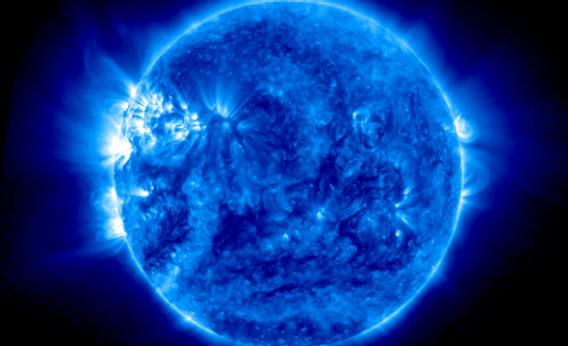Create a free profile to get unlimited access to exclusive videos, sweepstakes, and more!
Journey From the Far Side of the Sun

Studying the Sun from Earth can be frustrating. From 150 million kilometers away, we can only see one side at a time. Sure, the Sun rotates, so we see the whole thing over the course of about a month, but sometimes you want to see it from different angles at the same time, like when it shoots out an explosive flare or coronal mass ejection.
What you want is a stereo view. Or STEREO.
STEREO is the Solar TErrestrial RElations Observatory, a pair of Sun-orbiting satellites; one is in a slightly smaller orbit than Earth so it travels ahead of our planet and the other in a slightly larger one so it lags behind. Over time, they get far enough apart to see the Sun from totally different viewpoints.
Right now, STEREO-A (A for Ahead) is almost directly opposite the Sun from us. In fact, it was behind the Sun for a few days, but even before and after that it was so close to our star that communicating with it was not possible.
The image above, taken in the far ultraviolet, was one of the first to come back from STEREO-A, on July 15 (around the same time New Horizons was sailing past Pluto 15 times farther away from us). At this wavelength, magnetic activity glows fiercely, and you can easily see the towering loops of the Sun’s complex magnetic field piercing the surface and arcing a hundred thousand kilometers above the surface.
This is the same magnetic activity, incidentally, that will not cause an ice age on Earth. Not that it isn’t dangerous.
STEREO has provided a huge amount of benefit to solar astronomers trying to figure out the ridiculously complicated behavior of our nearest tame nuclear inferno.
Sometimes, though, what it does is just plain cool … like the time it saw the Moon pass in front of the Sun. It’s a solar eclipse like you’ve never seen before.
We learn a vast amount of important, crucial, information from space-based astronomical observatories. But also, they just increase the coolness of our lives.
My apologies to Gerry Anderson for the title of this post.


























